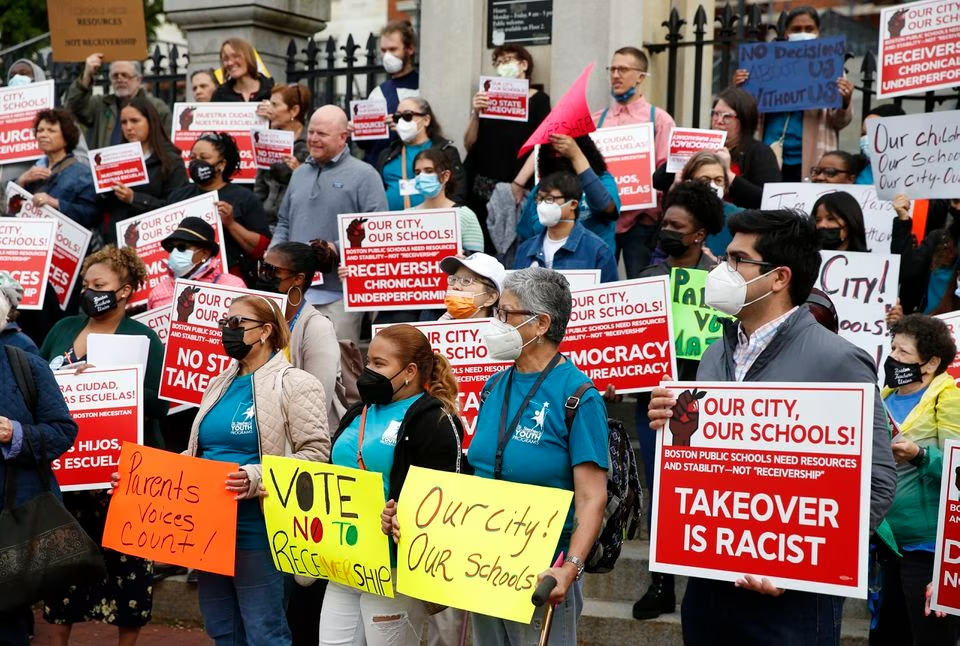State takeover  How the upper echelons of education operate
How the upper echelons of education operate

State takeovers are like a Christmas present you didn’t really want… but you have to smile about it.
When a school district is failing (50% graduation rate, awful test scores, low attendance, way too many suspensions, minorities + special ed students performing worse), the state can “take over” the district, gaining the combined authority of the school board and the superintendent.1 It’s a power play above your paygrade, but understanding it is important because millions of dollars go into funding these changes and students rarely see a nickel.1 Plus, student outcomes rarely improve, even in Massachusetts, a state that consistently ranks #1 on national surveys.
Why?
- Low income groups don’t get to voice their opinion on how the takeover should work, even though they’re the most affected group. Part of the obstacle is just traveling from your town all the way to the state capital to voice your opinion at takeover discussions.
- Takeover usually means limiting the central office and empowering principals. Do you hear the word, “Students”? Me neither. That can be an important policy improvement, but it is so far away from day-to-day school experience.
- The state is great at managing money, so schools get more financially efficient, but student outcomes don’t improve because… what does the state know about managing schools?
- The state usually recognizes it has to build trust with the community (parents and teachers), but don’t realize building trust is only the first step to changing culture.3

See State Takeover by Simone Fried, which is also the source of the following example about a hispanic mother.
At Doorstop Education, we believe that listening to and building trust with marginalized groups is not enough. If you help a Spanish-speaking mom understand how the school is supporting her son with ADHD, translating documents into Spanish for her, that’s great. But can you really say this woman has a voice in the shape of her son’s educational experience? No!
Marginalized communities need to be educated on how school works to reasonably voice a perspective on policy with resources like this one. A successful school reform study in the 1980s paid parents a small salary to attend informational meetings on how school was run and how they can best support their students.4 The results were incredible.
The same has to be done for students. “Focus groups” and “principal’s breakfasts” usually bring the most motivated kids to the conversation. Seeking out the students that don’t show up… or care… is incredibly difficult, but it is also necessary. How can you help those students if they don’t even know what’s going on?—or that there’s something that could be changed.
So… how do you go about that? Has this type of thing been done anywhere since the 1980s?
... No. But we're giving it a go! Sign up for Doorstop Fellas to get our help running these types of programs at your school!
1. Plus, they can suspend collective bargaining with unions. ↩
2. Takeovers were implemented as state leverage in 2001 by the No Child Left Behind Act. They’re new. They’re controversial. Successes are mixed: they’re a last resort. ↩
3. To get the state education agency to vote for a takeover, you have to trash the district, emphasizing how awful it is. For a takeover to work, you have to build trust with locals. See the contradiction? ↩
4. Comer, School Power. Giving money to research studies has since been Banned for ethical issues, so studies like these have stopped being performed. ↩